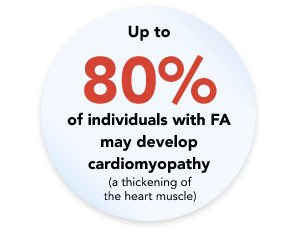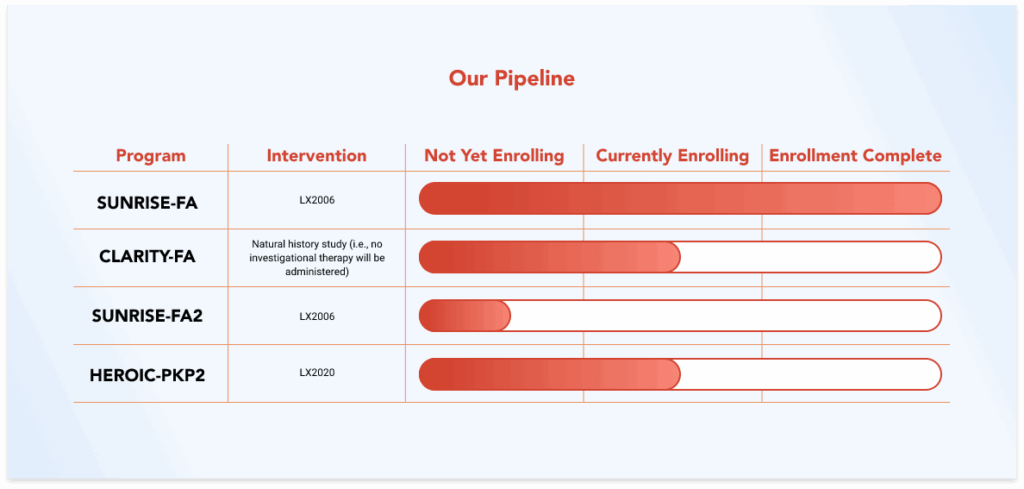Our Clinical Trials
FRIEDREICH ATAXIA CARDIOMYOPATHY (FA-CM)
Friedreich ataxia (FA) is a multi-systemic genetic disease — involving the nervous system and heart — in which heart issues are the leading cause of a shortened lifespan. Though considered rare, FA is the most common form of hereditary ataxia in the U.S.

FA is caused by a change, or mutation, of the frataxin (FXN) gene. This change in the FXN gene means that less frataxin protein is made (remember, the incorrect recipe!). Without frataxin, the body cannot make enough energy to power organs and tissues like the brain, muscles and heart.
Most people can recognize the signs and symptoms associated with FA, such as difficulty with movement, muscle weakness, poor muscle control and unsteady balance.1 But what often goes unnoticed is the silent damage to the heart.

Heart issues associated with FA are particularly dangerous because they can begin silently but can eventually lead to complications such as heart failure and abnormal heart rhythms.2,3

There currently are no approved treatments for heart disease in FA, which makes it crucial to perform clinical trial research for treating the heart-related issues in FA.4
At Lexeo, we have made this unmet need a top priority and are currently researching an investigational gene therapy called LX2006 in clinical trials.
Learn More About Our FA Trials

The CLARITY-FA natural history study is designed for researchers to learn about how heart disease develops and worsens in individuals with FA.

References
- Payne RM. Cardiovascular Research in Friedreich Ataxia. JACC: Basic to Translational Science. 2022;7(12):1267-1283. doi:10.1016/j.jacbts.2022.04.005
- Norrish G, Rance T, Montanes E, et al. Friedreich’s ataxia-associated childhood hypertrophic cardiomyopathy: a national cohort study. Arch Dis Child. 2022;107(5):450-455. doi:10.1136/archdischild-2021-322455
- Hanson E, Sheldon M, Pacheco B, Alkubeysi M, Raizada V. Heart disease in Friedreich’s ataxia. World J Cardiol. 2019;11(1):1-12. doi:10.4330/wjc.v11.i1.1
- Data on file.
